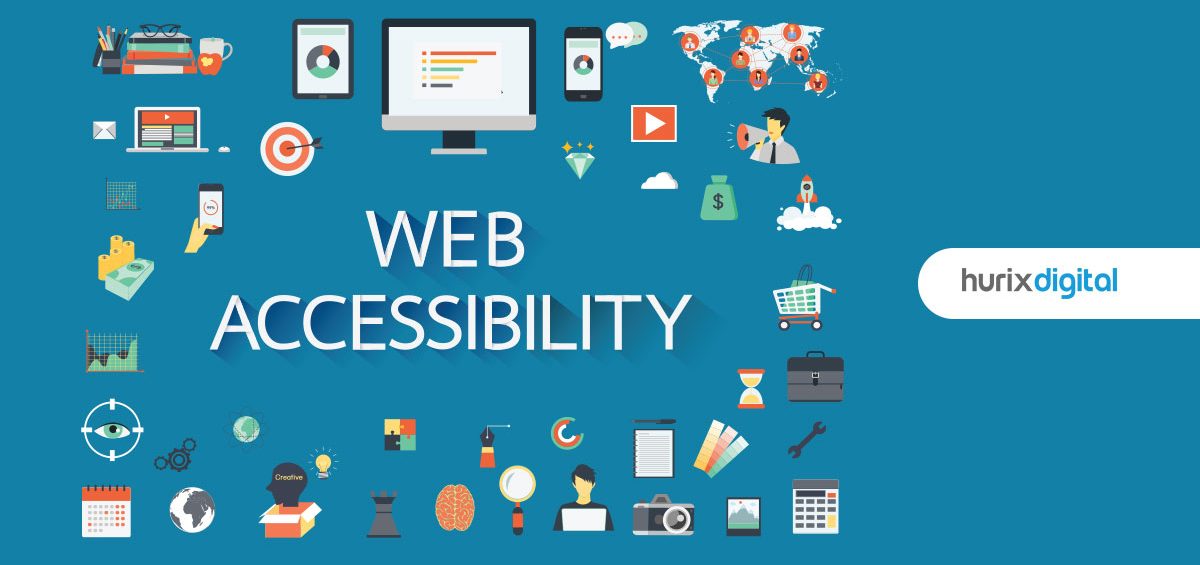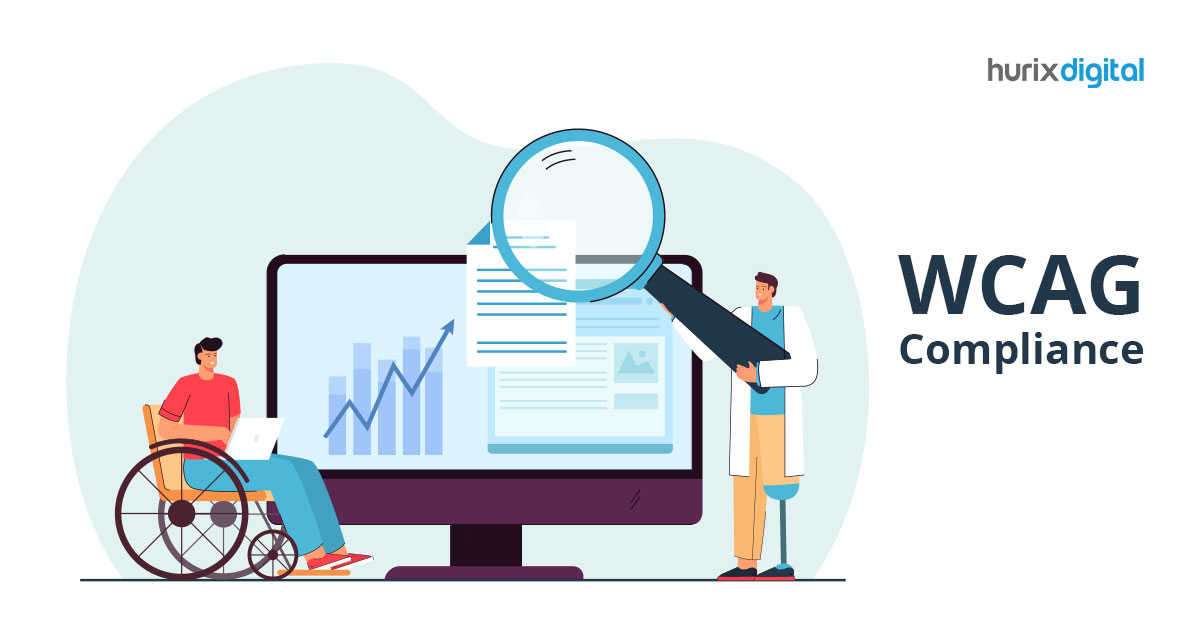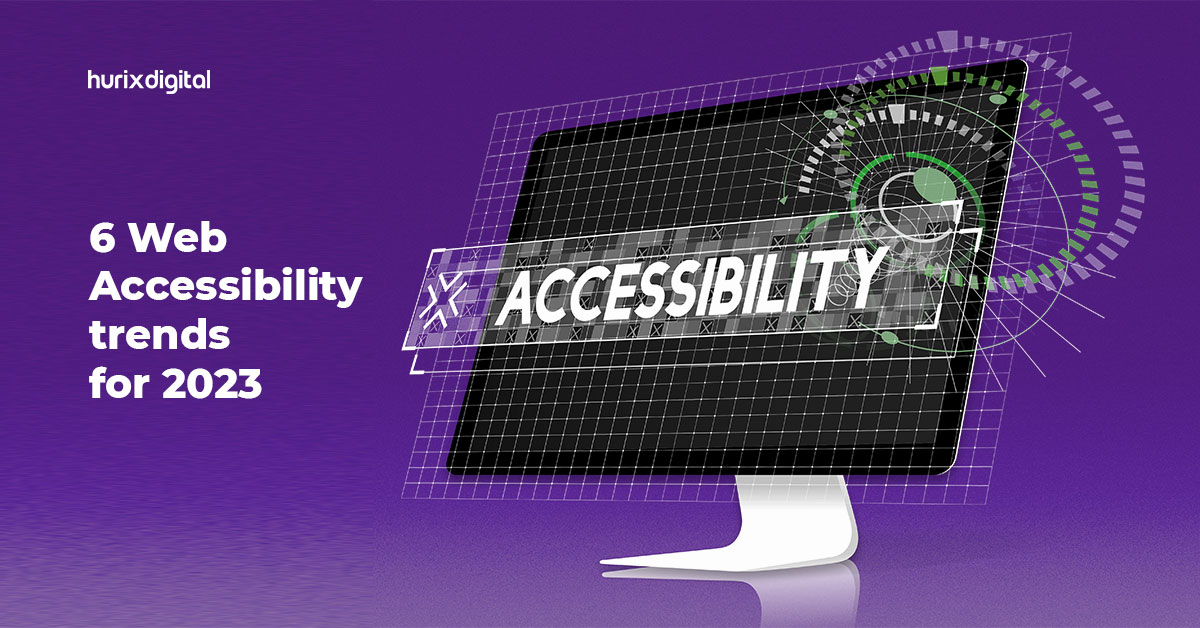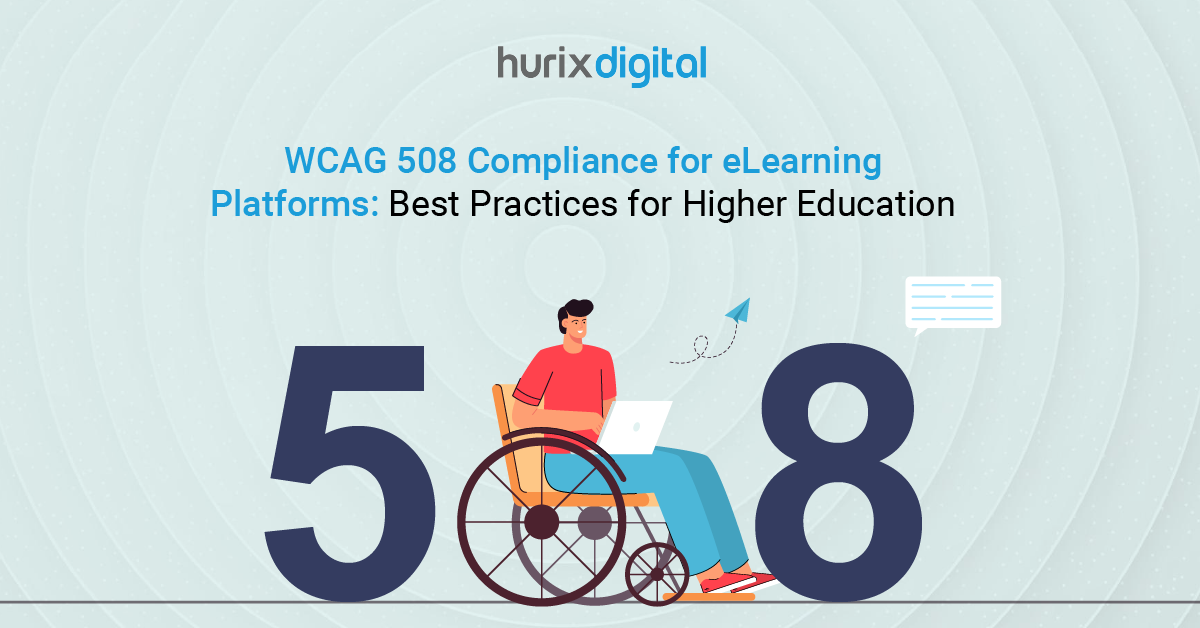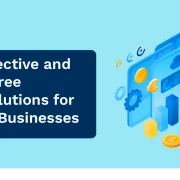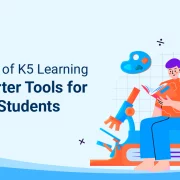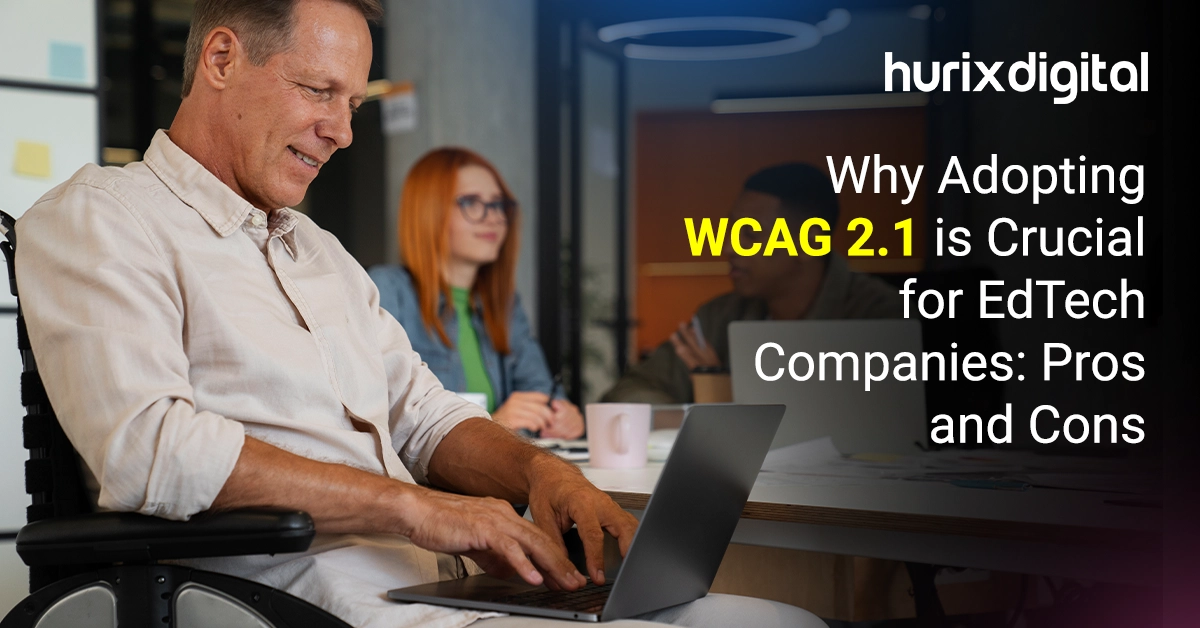
Why Adopting WCAG 2.1 is Crucial for EdTech Companies: Pros and Cons
Summary
Education’s future hinges on the EdTech sector’s capacity to design accessible educational opportunities. To realize this vision, accessibility must come first. By making themselves accessible to all students, EdTech platforms should put inclusion first.
The Web Content Accessibility Guidelines (WCAG) 2.1 provides a comprehensive framework to ensure digital content is accessible to individuals with disabilities. These standards, developed by the W3C, prioritize content that is perceivable, operable, understandable, and robust, catering to a diverse range of impairments.
This article explores the top reasons for the WCAG 2.1 upgrade, the potential challenges associated with this shift, and practical best practices for a smooth implementation.
Table of Contents:
- Best Practices for WCAG 2.1 Transition
- The Evolution of Accessibility: WCAG 2.0 vs 2.1
- Conformance and Compatibility
- Top Reasons for WCAG 2.1 Upgrade
- Challenges of WCAG 2.1 Compliance
- WCAG 2.1 for Educational Technology: Addressing Specific Needs
- EdTech Accessibility Challenges: Beyond the Technical
- The Bottom Line
Best Practices for WCAG 2.1 Transition
EdTech companies should consider the following WCAG 2.1 best practices to ensure successful implementation:
- Incremental Implementation: Prioritize accessibility features based on their impact on user experience, implementing changes in phases for a manageable and efficient approach.
- Comprehensive Accessibility Audits: Examine current platforms in-depth to find areas that need upgrading. This data-driven strategy efficiently distributes resources and gives remediation efforts top priority.
- Accessibility by Design: Incorporate accessibility concepts from the beginning of the initiation development process. This proactive strategy ingrains accessibility in the very fabric of the product. Assign a person or group to spearhead the accessibility initiative, ensuring WCAG 2.1 criteria are followed consistently.
- User-Centered Design: User needs and perspectives must be assigned top priority across the development process. Regularly include individuals with impairments in the testing process to get their feedback and guarantee adherence to accessibility regulations.
- Clear Communication and Training: Encourage an accessible culture by providing comprehensive training to all parties involved. Effective communication ensures alignment with WCAG 2.1 guidelines and encourages collaboration.
- Continuous Improvement: The quest for accessibility never ends. Provide a procedure for routine audits, improvements, and updates to ensure compliance and handle emerging accessibility challenges.
- Skill Development: Equip the development team with the necessary knowledge and tools to create accessible EdTech experiences.
Also Read: Accessibility and the Need for Closed Captioning in Educational Videos
The Evolution of Accessibility: WCAG 2.0 vs 2.1
The transition from WCAG 2.0 to WCAG 2.1 implies a significant advancement in web accessibility standards. WCAG 2.1 introduces crucial enhancements to address the evolving needs of individuals with disabilities, building upon the foundational principles of its predecessor.
It demonstrates a heightened commitment to inclusivity, particularly for individuals with cognitive, learning, and low vision disabilities. Despite some progress, the complex nature of these disabilities and time constraints present significant challenges. The guidelines provide a strong base but recognize the necessity for ongoing growth in this field.
A few key differences between WCAG 2.0 and 2.1 are the inclusion of additional success criteria, enhanced definitions, and expanded guidelines to address new forms of accessibility. A collaborative ecosystem including browser developers, assistive technology suppliers, and content authors is necessary to realize the full potential of accessible web content. Moreover, collectively upholding WCAG 2.1 and encouraging ongoing improvement are requisites for achieving an inclusive digital environment.
Conformance and Compatibility
Although WCAG 2.1 introduces improvements to meet changing accessibility requirements, it maintains the core compliance paradigm from WCAG 2.0. WCAG 2.1-compliant websites also meet the requirements of WCAG 2.0, guaranteeing they are in line with current accessibility regulations and norms.
This backward compatibility highlights how WCAG 2.1 is gradual in nature, building on the strong foundation of its predecessor while broadening the definition of accessibility to accommodate a greater variety of user needs.
Top Reasons for WCAG 2.1 Upgrade
Beyond the ethical imperative, transitioning to WCAG 2.1 offers several business advantages:
- Enhanced Market Expansion: EdTech companies can reach a wider audience, including people with disabilities, and improve market share and revenue potential by eliminating digital obstacles.
- Improved Brand Image: A company’s standing as a socially accountable and all-encompassing entity is enhanced by demonstrating dedication to accessibility. This cultivates customer allegiance and confidence.
- Enhanced User Experience: Following accessibility principles generally leads to a friendlier and more intuitive experience for all users, regardless of their capabilities. This can increase involvement, contentment, and the general user experience.
- Legal Compliance: The likelihood of facing legal disputes regarding digital accessibility can be reduced by complying with WCAG 2.1, offering legal security for the company.
- Future-Proofing: Companies with prior investment in WCAG 2.1 are better positioned to adapt to future requirements as accessibility standards improve.
- Competitive Advantage: WCAG 2.1 early adopters can set themselves apart from rivals and obtain an advantage over late entrants in the accessible EdTech industry.
Research shows time and time again that accessible websites accessible enhance usefulness for all users, no matter their ability. This customer-focused approach facilitates better user experiences, increased brand loyalty, and sustained use of the EdTech platform.
Challenges of WCAG 2.1 Compliance
The transition to WCAG 2.1 necessitates acknowledging potential challenges
- Technical Complexities: Integrating accessibility features across existing platforms can be technically demanding. It may involve code modifications, user interface (UI) adjustments, and content re-evaluation.
- Resource Limitations: Putting accessible measures into place often calls for an upfront commitment of staff time, resources, and possibly accessibility expertise.
- Organizational Change: Switching to WCAG 2.1 successfully necessitates an adjustment in mindset. It is crucial to cultivate an accessible culture across all divisions, from content creators to developers.
WCAG 2.1 for Educational Technology: Addressing Specific Needs
EdTech platforms cater to a wide variety of learning capacities and styles. These particular needs are addressed by the special success criteria provided by WCAG 2.1:
- Keyboard Accessibility: All features must be operable to individuals with motor restrictions solely through keyboard use.
- Compatibility with Screen Readers: Information should be accessible to users with visual impairments through the efficient rendering of content by screen reader software.
- Text Alternatives for Non-text Content: For non-visual learners, descriptive text counterparts should be provided alongside images, audio, and video content. 4. Color contrast: Text and backdrop should have sufficient contrast for users with vision impairments to be able to read it.
- Clear and Predictable Layout: Intuitively organized interfaces simplify navigation and content comprehension.
EdTech Accessibility Challenges: Beyond the Technical
While WCAG 2.1 provides a robust technical framework, other accessibility challenges persist in the EdTech landscape. Understanding the challenges of WCAG 2.1 compliance is crucial for successful integration.
- Assessments and Evaluations: Accessibility considerations must extend to online assessments and evaluation tools. This may involve providing options for extended time testing or offering alternative response formats.
- Digital Rights Management (DRM): DRM restrictions on educational resources can inadvertently create barriers for users with disabilities. EdTech companies should explore inclusive DRM solutions.
Addressing these broader accessibility concerns requires collaboration between EdTech developers, educators, and disability rights organizations.
Also Read: Understanding the Basics of European Union Accessibility Laws and Acts
The Bottom Line
Recognizing the WCAG 2.1 compliance benefits is essential for gaining organizational support. Through the purposeful incorporation of advanced accessibility features, the education sector can establish a fair and inclusive learning environment using digital learning tools and management systems.
These advancements can close the divide between students with and without disabilities, creating a new generation of capable learners ready to succeed in a more and more digital society. With the ongoing technological advancement, the EdTech sector must prioritize accessibility to avoid excluding students.
Hurix Digital’s comprehensive accessibility solutions empower businesses to create inclusive digital platforms. Through rigorous audits, expert guidance, and cutting-edge technology, we help you achieve WCAG compliance and build a reputation for accessibility excellence. Contact Hurix Digital today to initiate your accessibility journey.

Vice President – Digital Content Transformation. He is PMP, CSM, and CPACC certified and has 20+ years of experience in Project Management, Delivery Management, and managing the Offshore Development Centre (ODC).
